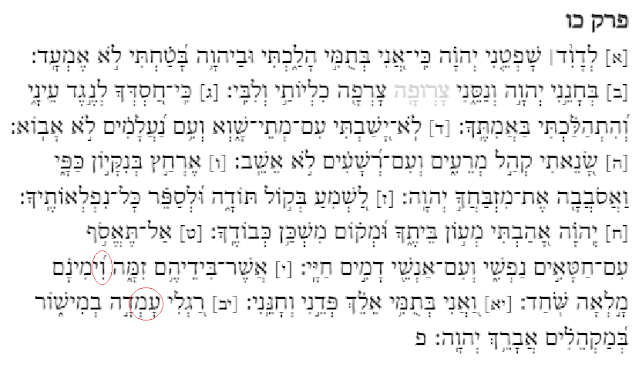Comparing Psalm 26 as a whole in the Aleppo codex and the Leningrad codex reveals a couple of differences in the cantillation signs, among them two spurious methegs in the WLC that are not in the Aleppo. My program eliminated only one of these.
Here is an image of the Aleppo transcription with the two differences that I noted circled in red. Two differences in 100 years?
 |
| Psalm 26 -- sight sing this bit of the Aleppo codex |
Comparing the psalm with Haïk-Vantoura's rendition of the Letteris edition, shows a larger set of differences.
 |
| Letteris edition of Psalm 26 -- showing about 15 differences with the Aleppo codex |
The images show the differences in the accents. For instance, in line 1, שָׁפְטֵ֤נִי in the Aleppo and WLC has a clear mapakh below the text and no short vertical bar (metheg) below the last syllable of this word. Nonetheless, Haïk-Vantoura's version reads as if there were a munah under the second syllable and a silluq under the third, or as if there were an illuy over the second syllable. A glance at the Letteris edition of the psalms (available here) shows an illuy. I.e., over time, an ornament above the text has replaced the reciting note below the text.
Her music is below. If you compare this with the music created from the WLC here, it is easier to see the differences. It's an accumulation of copying errors and inventions. Though it doesn't eliminate the use of the deciphering key, it certainly changes the music, sometimes for the worse. A thousand years of copying have produced several spurious returns to the tonic, a confusion of ornaments, and a proliferation of additional zarqas. There is no performance of this psalm. I wonder if Haïk-Vantoura had noted the spurious methegs and decided not to chose to have this psalm performed.
No comments:
Post a Comment